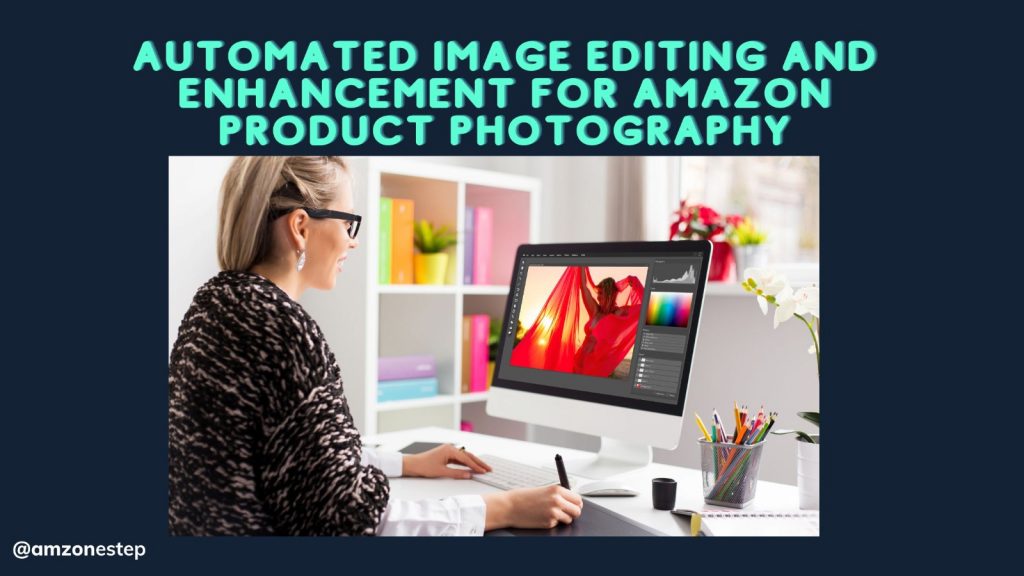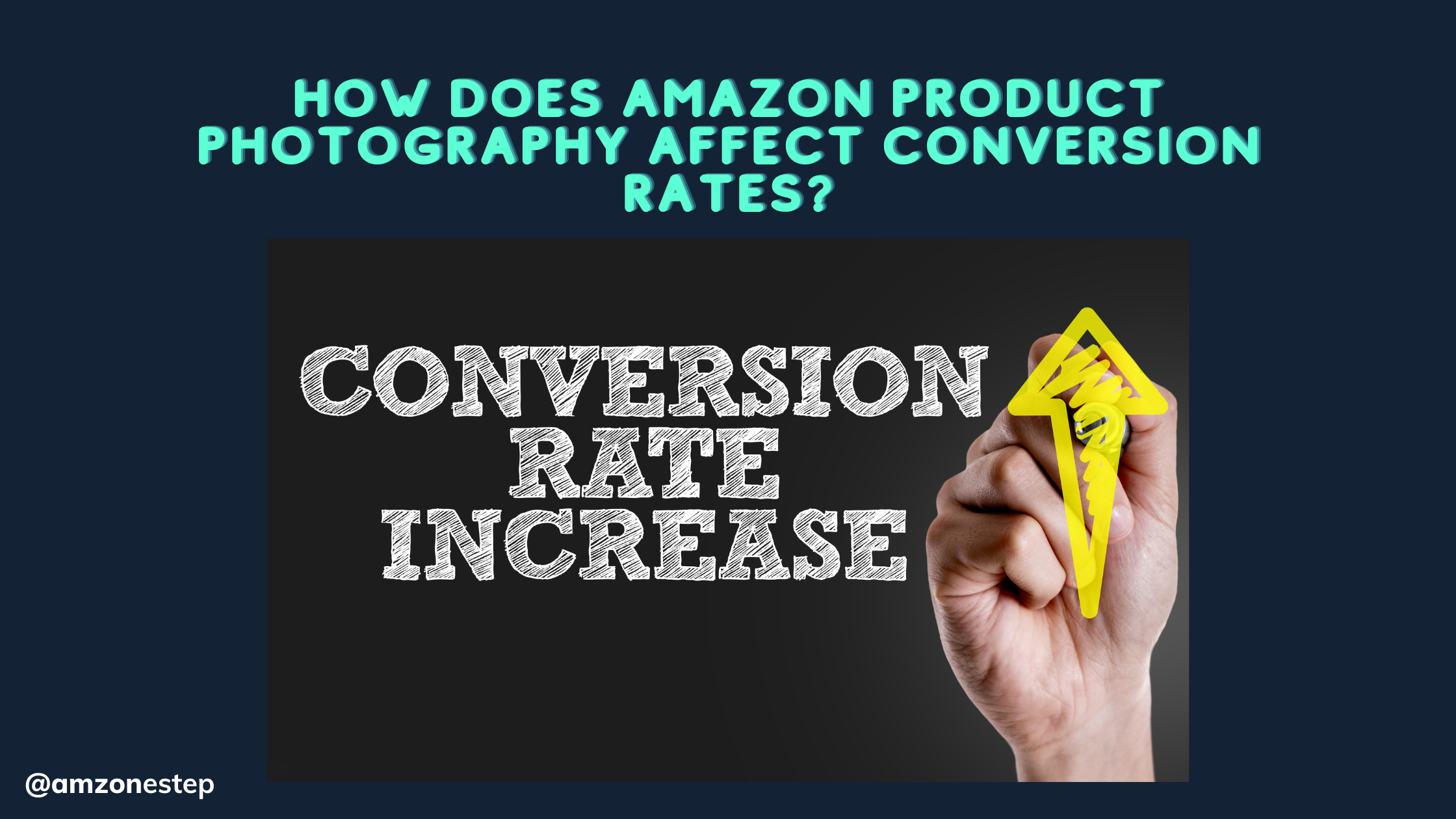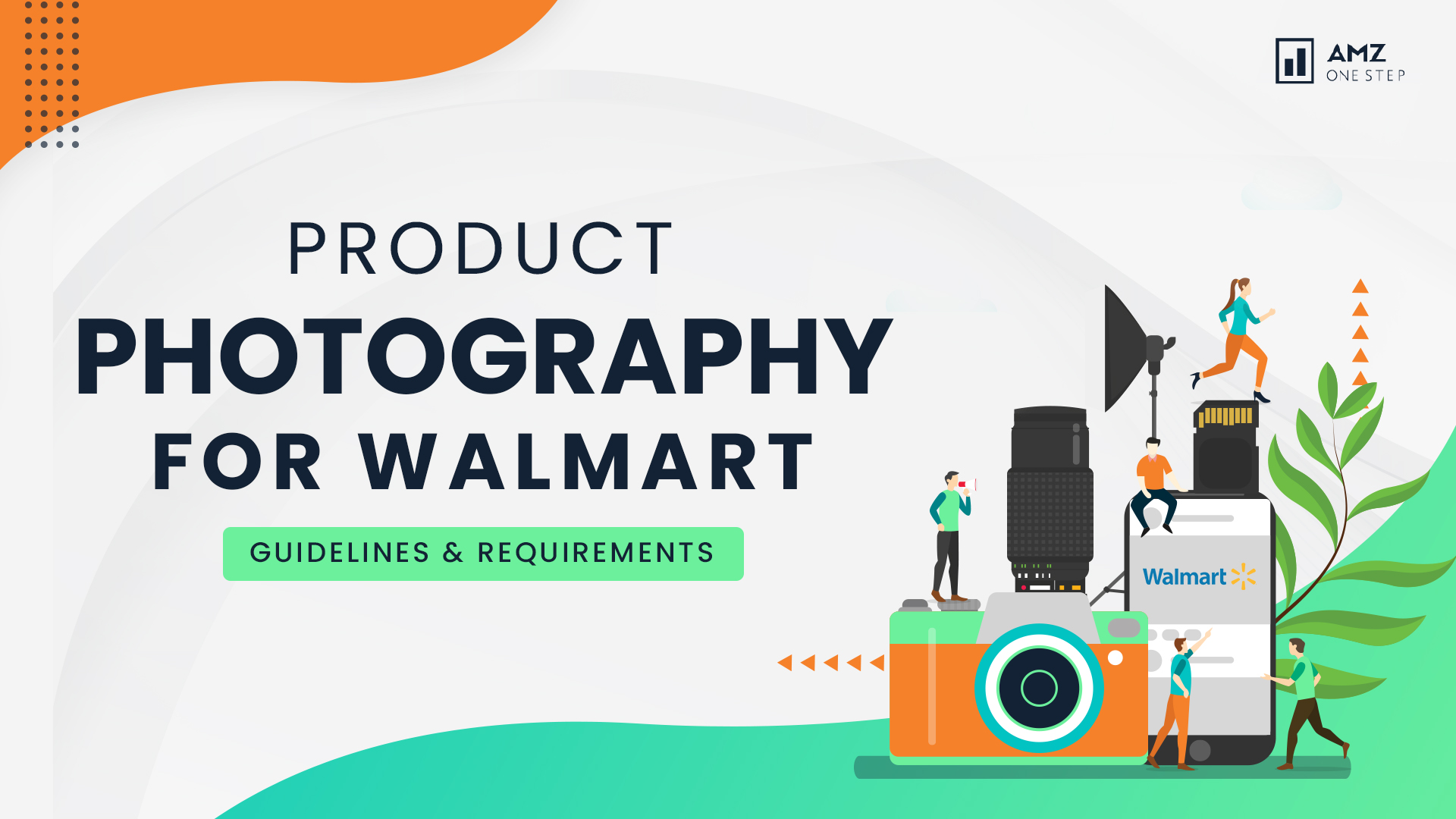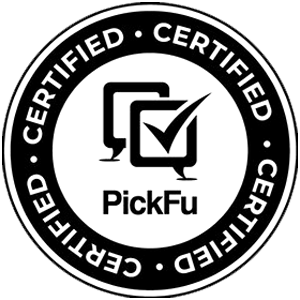What catches your attention as you browse Amazon’s enormous virtual aisles? Is it the product description? The price? Nope! Those stunning product pictures cause you to halt and mutter, “Hot dang, I need that in my life!”
But let’s face it, not all of us have the photographic talent of Ansel Adams or the graphic design brilliance of Picasso. Do not worry, my friends; automation comes to rescue the day! We can change a flat, lifeless photograph into a stunning work of art that would cause even Da Vinci to cry with jealousy with only a few clicks and some algorithmic wizardry.
Understanding Amazon’s Product Image Requirements


It isn’t easy to overstate the value of visual displays when selling things on Amazon. Sales may be increased, and potential customers might be attracted by engaging product graphics. Amazon has established specific rules to maintain a uniform and aesthetically pleasing consumer purchasing experience.
Image Dimensions And File Formats
Following the recommended image dimensions and file formats is essential when creating product photos for Amazon. The information below clarifies this aspect:
Going the Amazon way
Amazon advises utilizing photos with a minimum dimension of 1000 pixels on the longest side to guarantee clarity and visibility. For improved quality and zoom capabilities, larger-resolution photos are frequently recommended.
Background and context requirements
A product image’s background is essential to successfully showing the item. Let’s examine the main components of Amazon’s background and context requirements:
Blue backgrounds
For the majority of product photos, Amazon requires an entirely white background. This makes the product stand out and gives it a tidy, polished appearance. Avoid employing extra props or attention-grabbing aspects that could detract from the core product.
Context is key
When appropriate, Amazon will accept contextual photos that give further details about the application or size of the product. Potential customers may attain a better knowledge of the characteristics and functioning of the product with the aid of these photos.
Mastering Amazon’s Product Image Requirements


Producing eye-catching, high-quality product images is essential for selling items on Amazon. Amazon has developed precise specifications for product photos to provide customers with a consistent shopping experience.
In-depth discussion of backdrop and context requirements, picture dimensions and file formats, and standards for image resolution and quality are all covered in this detailed reference on Amazon’s product image requirements. You can successfully promote your items and increase your chances of success on the platform by being aware of and adhering to these rules.
Best Practices for Automated Image Editing on Amazon
There are some best practices to consider while automating picture editing on Amazon. These procedures guarantee that your modified photographs uphold the appropriate quality standards and engage clients. Three crucial techniques are listed below:
Testing and Previewing Edits before Finalizing
Testing and previewing the changes is essential before applying automatic modifications to your product photos on Amazon. This enables you to determine how the improvements affect the overall image quality and ensure they adhere to your brand rules.
Consider setting up a test environment or utilizing example photos to test various editing techniques. Before publishing the adjustments, you may identify any possible problems or unexpected effects by previewing the changes.
Monitoring Customer Response and Feedback
Once your modified photographs have gone live on Amazon, keeping track of consumer comments and responses is critical. Pay attention to consumer feedback, rankings, and any particular remarks about the image’s quality.
Customer feedback may determine how successfully your modified photographs connect with the intended audience. Customers may notice trends or recurrent problems; pay attention to these as they help you hone your Amazon product photo editing technique and enhance subsequent versions.
Iterating and Evolving Your Editing Approach
Automated photo editing is a continuous process that necessitates iteration and growth. Using a data-driven strategy, analyze performance measures, including click-through, conversion, and revenues. Analyze the effects of various editing methods on these parameters and choose the best techniques.
Based on the knowledge you get from consumer feedback and performance statistics, continually improve your editing process. Thanks to this iterative process, your modified photos will continue to be pertinent, aesthetically pleasing, and able to generate conversions.
You may improve the effectiveness and quality of your automatic picture editing on Amazon by adhering to these recommended practices. Don’t forget to test frequently, watch consumer feedback, and modify the editing strategy for the best outcomes.
AI Contribution To Image Editing And Enhancement

Artificial intelligence (AI) has made significant strides recently and revolutionized several sectors, including image editing for e-commerce and enhancing images. AI is crucial in automating and expediting the editing process for Amazon product photographs, which has various advantages for sellers.
We will examine the essential contributions of AI to automated picture editing and improvement for Amazon product photography in this part.
Super-Resolution
Using deep learning, AI systems may improve the clarity and detail of low-resolution photos. These algorithms can produce more precise copies of low-resolution photos by learning from databases of high-resolution images. Super-resolution algorithms are helpful in areas including surveillance, medical imaging, and improving low-quality pictures for printing or display.
Object Recognition and Segmentation
AI systems can accurately recognize and divide the various items in a picture. This skill helps edit tasks, including background removal, object manipulation, and image composition. AI models may isolate and identify Specific items or pieces, enabling focused editing and expanding the range of possible creative solutions.
Optimizing Efficiency for Image Enhancement Workflows
It might take a long time and be ineffective to manually alter each image, especially when many product photographs are involved. Automated batch processing and mass editing can save the day in this situation.
By using these tools, Amazon sellers may streamline their workflows for picture improvement, reducing time and effort requirements while maintaining high-quality standards. In this post, we investigate how batch processing and automated mass editing might completely change how product photos on Amazon are improved.
Understanding Bulk Editing
Applying the same editing techniques to several photographs at once is known as bulk editing. Bulk editing enables sellers to make uniform alterations across a collection of product photographs rather than individually altering each image.
Bulk editing accelerates the procedure and boosts effectiveness for changing exposure, color correction, sharpness, or noise reduction. Sellers may save time and work by automating these editing activities, maintaining a unified and polished appearance throughout their product catalog.
Automated Bulk Editing Tools
Sellers may use AI-powered image editing tools and software created expressly for automating picture-enhancing procedures to conduct mass editing efficiently. These tools include functions including parameter synchronization, bulk processing, and preset setups.
They allow vendors to modify several photos simultaneously, saving time and assuring constant improvements. Some products even include sophisticated algorithms that can examine photographs and make automatic setting adjustments for the best outcomes, significantly improving productivity and output quality.
Preserving Consistency and Quality
Maintaining consistency and quality across all photos is one of the key considerations while undertaking mass editing. Sellers must set up suitable procedures and regulations to solve this.
Care should be taken when choosing and arranging photographs for mass editing to ensure they are from the same product category or have comparable traits. Sellers can guarantee that their pictures have a unified design while achieving Amazon’s quality requirements by following consistent editing rules and paying attention to details.
Read More: Harnessing AI for Stunning Product Visuals: Enhancing Your Amazon Listings
Addressing Challenges and Limitations

With the popularity of automated photo enhancement programs, it is interesting to use these methods when changing images. The difficulties and constraints of this strategy must, however, be understood.
You may minimize problems and increase the outcomes of automatic picture enhancement on Amazon by being aware of these constraints and implementing sensible plans.
Set Clear Guidelines and Review Processes
Clearly define the rules for automatic image improvement, considering your brand’s demands and aesthetics. Review and assess the automated algorithms’ output frequently to ensure it meets your expectations.
Put in place a review procedure where knowledgeable editors evaluate the improvements and make any required changes to preserve brand coherence and image quality.
Combine Automation with Human Expertise
Utilize automation’s advantages while recognizing the value of human knowledge. Consider a hybrid strategy, where automated algorithms handle time-consuming and repetitive duties while expert editors supply the essential subjective judgment and manage complex editing needs. For the best outcomes, this combination guarantees a balance between effectiveness and customization.
Image Localization for International Markets
A significant growth potential exists when you expand your Amazon business to foreign regions. But translating product listings isn’t enough to reach people worldwide effectively. Additionally, product visuals must be modified to appeal to various linguistic and cultural norms.
Time and Cost Savings
Manual image localization can be labor- and resource-intensive for every foreign market. By utilizing automation, vendors may drastically save the time and effort required for image adaptation.
Automated technologies make it possible to make effective alterations to several photographs simultaneously, saving time and money.
Accuracy and Consistency
Automated picture localization guarantees accuracy and consistency in language translations and cultural adaptations. Artificial intelligence (AI) and machine learning-powered algorithms may provide accurate translations suitable for the context, reducing the possibility of mistakes or misinterpretations.
This level of uniformity contributes to maintaining a consistent brand image across various foreign marketplaces.
Automated Amazon Watermarking and Branding
Sellers may now use automated methods to add Amazon watermarks and branding features, which was previously a labor-intensive and time-consuming operation. This is possible because of developments in automation.
Selecting an Automated Watermarking and Branding Tool
Select a computer program made especially for watermarking and branding photographs. Look for capabilities like batch processing, editable templates, and adjustable placement choices to meet your branding demands. Think about using tools that work well with your current picture editing process.
Making a Branded Template
Design a template with your brand’s name, logo, and other visual components. Ensure the template adheres to the principles of your brand and visually enhances your product photographs. You may often save and reuse templates using automated tools, maintaining consistent branding throughout your picture collection.
Training and Onboarding for Automated Enhancement Tools
Proper training gives salespeople the information and abilities to use automated enhancement tools efficiently, enhancing image quality, boosting output, and boosting sales.
Case Studies: Successful Implementation of Automated Enhancement
The use of automated enhancement technologies has changed how sellers on Amazon improve their product photos. By utilizing automation, sellers have seen a considerable boost in image quality, productivity, and overall sales performance.
XYZ Electronics
An Amazon seller, XYZ Electronics, suffered from labor-intensive, inconsistent manual picture editing procedures. They need a solution to boost productivity, expedite their picture-enhancing process, and guarantee a uniform and polished appearance throughout their product catalog.
They drastically cut down on the time they spent editing images, allowing them to submit new goods more quickly and keep ahead of the competition.
Because of the tool’s sophisticated algorithms, color correction was consistently done, producing aesthetically appealing photographs that enhanced consumer engagement and conversions. Consequently, XYZ Electronics saw a notable increase in revenue and client satisfaction.
PQR Home Decor
PQR Home décor, an Amazon seller specializing in home décor items, sought to improve its product photos while continually preserving its brand identity. To protect their brand and pictures, they tried to automate the process of applying watermarks and branding components.
PQR Home Decor protected their photographs and built a solid brand identity on Amazon with the automatic enhancing tool. They saved their pictures from unauthorized use while automatically enhancing brand awareness by applying watermarks and branding features.
A better market position and more profitable sales resulted from their catalog’s consistent branding, building client trust and loyalty.
Conclusion
Our exploration into automated picture editing and enhancement for Amazon product photography has ended. We have looked at the magic of pixel manipulation, batch processing, and AI algorithms’ miracles. Continue clicking and changing while letting the computers handle the work.
And may the photos of your products shine brightly, attracting clients and putting a smile on their faces. Have a great day selling; may automation always work in your favor!

Hi there! I’m the content marketing and branding specialist for AMZ One Step. I work hard to create engaging and informative content that helps our readers learn more about Amazon selling and how to make the most of their businesses. I love spending time with my family and exploring literary works when I’m not writing or working on projects.
























